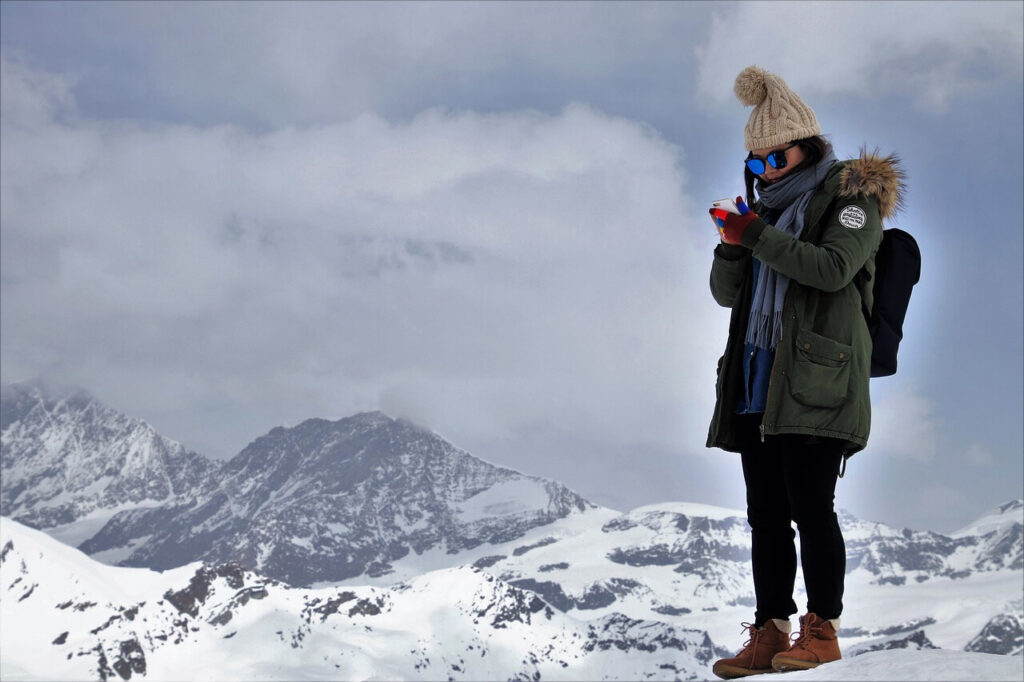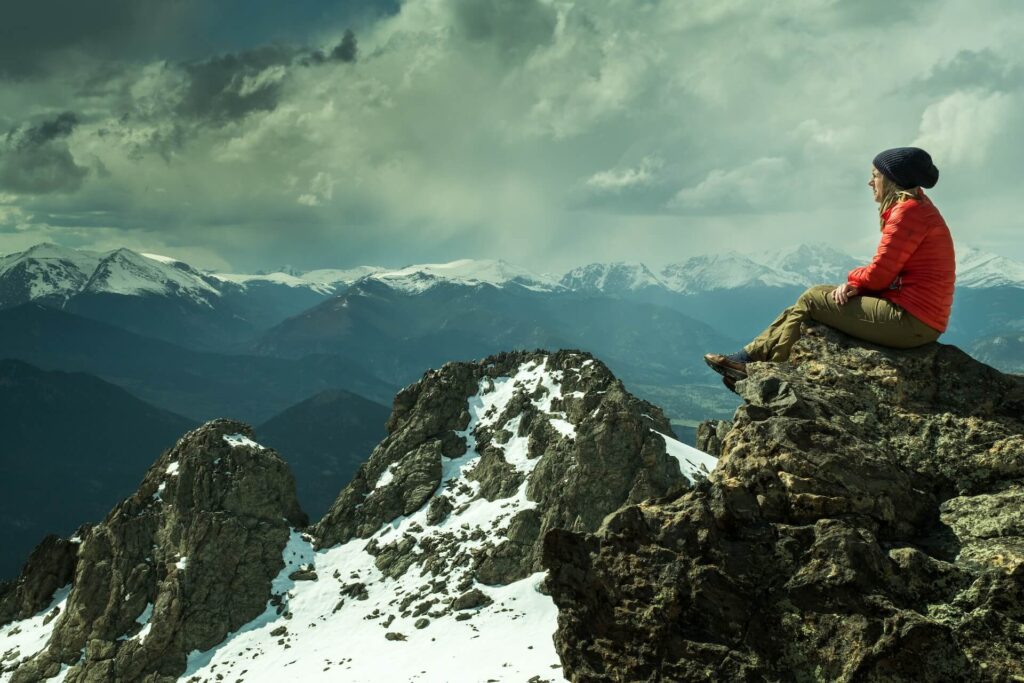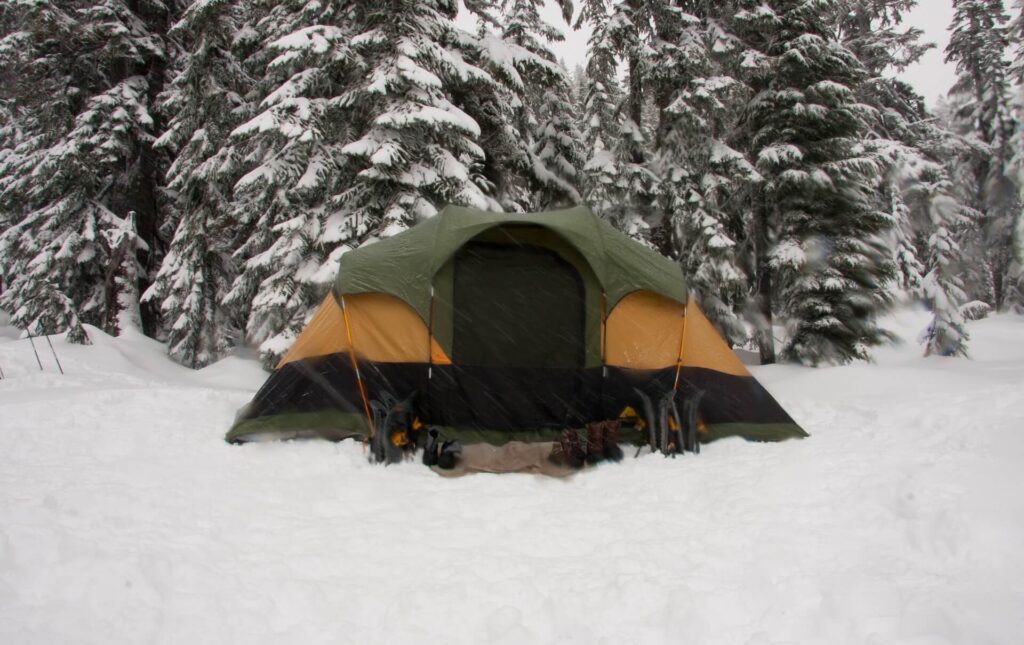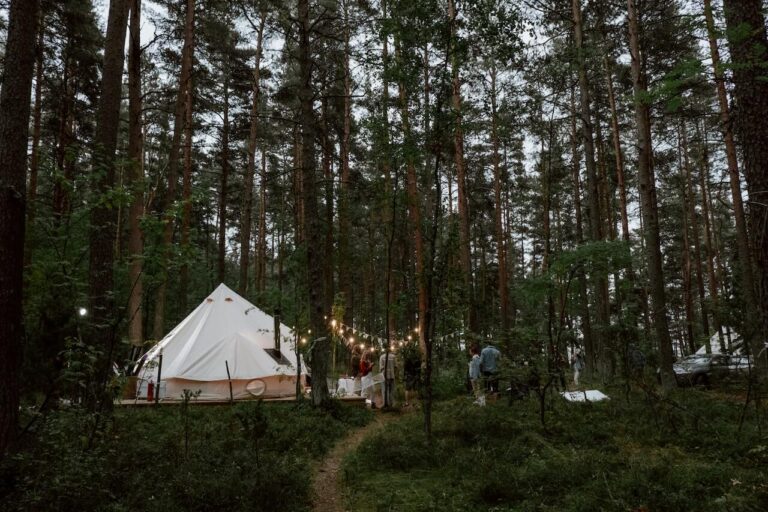
Introduction: Embracing Winter Hiking
Hiking in the Winter can be an exhilarating and rewarding adventure, offering unique and breathtaking views of snow-covered landscapes, crisp and refreshing air, and a sense of solitude and tranquility on the trails. However, hiking in winter also presents its own set of challenges, including freezing temperatures, icy trails, and potential hazards. Therefore, it is crucial to stay warm and safe during winter hikes to ensure an enjoyable and safe experience.
• Why Winter Hiking Can Be an Exciting Adventure
Winter hiking offers a distinct experience compared to hiking in other seasons. The landscape is transformed into a winter wonderland, with glistening snow covering trees and trails, and the peaceful silence of nature under a blanket of snow. Winter hiking can provide a unique sense of serenity and solitude as many trails are less crowded during this time of year, allowing for a more intimate connection with nature. It also offers opportunities for activities such as snowshoeing and cross-country skiing, adding an element of fun and adventure to your hike. Embracing winter hiking can provide a new perspective on familiar trails and create unforgettable memories.
• Importance of Staying Warm and Safe in Cold Weather
Staying warm and safe during winter hiking is of utmost importance to prevent cold-related injuries such as frostbite and hypothermia. Cold weather can pose serious risks to hikers, including freezing temperatures, wind chill, and wet conditions that can quickly sap body heat and lead to hypothermia. Proper preparation, including wearing appropriate clothing, having the right gear, and knowing how to navigate snowy and icy trails, is crucial to ensure safety during winter hikes. It is essential to be aware of the potential hazards of winter hiking and take necessary precautions to protect yourself from the elements.
As you embark on your winter hiking adventure, remember that safety should be a top priority. By being well-prepared, staying warm, and taking necessary precautions, you can enjoy the beauty and serenity of winter landscapes while staying safe on the trails. So, bundle up, pack your gear, and embrace the wonders of winter hiking!

Understanding Winter Hiking Challenges
Winter hiking presents its own unique set of challenges compared to hiking in other seasons. Being aware of these challenges and understanding how to overcome them is crucial to ensure a safe and enjoyable winter hiking experience.
• Cold Weather Hazards and Risks
One of the primary challenges of winter hiking is dealing with cold weather hazards and risks. Freezing temperatures, wind chill, and wet conditions can all pose serious risks to hikers. Exposure to cold temperatures for prolonged periods can result in frostbite, a condition where the skin and underlying tissues freeze, leading to damage and even tissue death. Hypothermia is another serious risk in cold weather, where the body loses heat faster than it can produce it, leading to a dangerous drop in body temperature. Other hazards include slippery and icy trails, reduced visibility due to snowstorms or whiteouts, and the risk of falling through frozen lakes or rivers.
• Importance of Proper Preparation
Proper preparation is critical for winter hiking to mitigate the risks associated with cold weather hazards. It starts with thorough research and planning, including checking weather forecasts, trail conditions, and potential hazards along the route. Choosing appropriate clothing is crucial, including wearing multiple layers for insulation, breathability, and waterproofing. Having the right gear, such as insulated and waterproof boots, gloves, hats, goggles, ice axes, crampons, and snowshoes, is essential for navigating snowy and icy trails safely.
Packing sufficient food and water, as well as emergency supplies such as a first aid kit, navigation tools, and communication devices, is crucial in case of unexpected situations. It’s also important to let someone know your hiking plans, including your route and the estimated time of return, and to stick to established trails in winter conditions.

Essential Gear for Winter Hiking
Having the right gear is crucial for staying warm, dry, and safe during winter hikes. Proper clothing, footwear, accessories, and safety equipment are essential to protect against cold weather hazards and ensure comfort and safety on the trails.
• Layering Clothing: Insulation, Breathability, and Waterproofing
Layering clothing is a key strategy for staying warm and comfortable during winter hikes. It allows for easy adjustment to changing weather conditions and helps regulate body temperature. The three layers to consider are insulation, breathability, and waterproofing.
Insulation: The base layer is responsible for trapping heat close to the body and keeping you warm. Choose moisture-wicking materials like synthetic or merino wool that will keep sweat away from the skin and prevent cooling. Avoid cotton as it retains moisture and can make you colder.
Breathability: The middle layer is designed to provide insulation while allowing moisture to escape to keep you dry. Fleece or softshell materials are good options for breathability and warmth.
Waterproofing: The outer layer, such as a waterproof and windproof jacket and pants, is essential for protection against rain, snow, and wind. Look for materials with good waterproofing properties and sealed seams to keep you dry in wet conditions.
• Footwear: Choosing the Right Boots for Snow and Ice
Having the right footwear is critical for winter hiking, as snowy and icy trails can be slippery and treacherous. Insulated, waterproof, and slip-resistant boots are essential to keep your feet warm, dry, and safe.
Insulation: Look for boots with good insulation to keep your feet warm in cold temperatures. Thinsulate or Gore-Tex lining are common insulation options for winter boots.
Waterproofing: Waterproof boots are crucial for keeping your feet dry in snowy or wet conditions. Look for boots with waterproof membranes such as Gore-Tex or eVent that provide reliable waterproofing.
Traction: Boots with aggressive, non-slip soles, or those with built-in crampon compatibility, can provide better traction on snowy or icy trails. Consider using additional traction devices like crampons or traction cleats for added grip.
Fit: Proper fit is essential for comfort and preventing blisters. Ensure your boots have enough room for thick winter socks, but not too loose to cause discomfort or allow cold air to enter.
• Winter Accessories: Gloves, Hats, and Goggles
Protecting your extremities from cold weather is crucial during winter hikes. Proper gloves, hats, and goggles can help keep your hands, head, and eyes warm and safe.
Gloves: Look for insulated and waterproof gloves that offer dexterity and grip for handling trekking poles, using equipment, and protecting your hands from cold and moisture.
Hats: A good-quality hat that covers your ears and insulates your head can help retain body heat and prevent heat loss from the head. Look for materials like fleece or wool for warmth.
Goggles: Goggles or sunglasses with UV protection are essential for protecting your eyes from snow glare and harsh winter sun. Look for goggles with good ventilation to prevent fogging.
• Safety Equipment: Ice Axes, Crampons, and Snowshoes
Safety equipment is crucial for navigating snowy and icy trails during winter hikes. Ice axes, crampons, and snowshoes are important tools to enhance safety and stability.
Ice Axes: Ice axes are essential for self-arrest and can be used for stability while traversing steep or icy terrain. Learn proper ice axe techniques and practice using them before heading out on winter hikes.
Crampons: Crampons are traction devices that attach to your boots to provide grip on icy or steep terrain. Look for crampons with a suitable fit and compatibility with your boots.
Snowshoes: Snowshoes are designed to help you stay on top of deep snow, providing better traction and preventing you from sinking. Choose snowshoes that are appropriate for the terrain and snow conditions you will encounter during your winter hike.
It’s important to familiarize yourself with how to properly use ice axes, crampons, and snowshoes before your winter hike, as they require specific techniques for safe and effective use.

Staying Warm on the Trail
Winter hiking requires careful attention to staying warm to prevent hypothermia, a dangerous condition where your body loses heat faster than it can generate, leading to a drop in core body temperature. Here are some important tips to stay warm on the trail during winter hikes:
• Proper Nutrition and Hydration for Cold Weather:
In cold weather, your body needs extra fuel to generate heat and keep warm. Make sure to pack high-energy snacks like nuts, trail mix, and chocolate, and drink plenty of water throughout the hike, even if you don’t feel thirsty. Dehydration can impair your body’s ability to regulate temperature, so it’s important to stay well-hydrated.
• Techniques for Generating Body Heat:
Keeping your body active and generating heat is crucial to staying warm during winter hikes. Take breaks as needed, but try to avoid prolonged periods of inactivity, as this can cause your body temperature to drop. Engage in physical activities like brisk walking, jumping jacks, or other exercises to generate body heat and stay warm.
• Managing Sweat and Moisture to Prevent Hypothermia:
Sweat and moisture can accelerate heat loss from your body, leading to hypothermia. Dressing in layers and managing sweat and moisture is critical to staying warm. Start with a moisture-wicking base layer that pulls sweat away from your skin, add an insulating layer for warmth, and top it off with a waterproof and breathable outer layer to protect against snow, wind, and moisture. Remove layers as needed to prevent sweating and re-dress when you start feeling cold to avoid getting chilled.
By properly managing nutrition, hydration, and body heat, and effectively managing sweat and moisture, you can stay warm and prevent hypothermia during your winter hikes, ensuring a safe and enjoyable experience on the trails.

Navigating Snow and Ice
Winter hikes often involve navigating through snowy and icy terrains, which requires special techniques and precautions to ensure safety. Here are some important tips for navigating snow and ice during your winter hikes:
• Techniques for Walking on Snowy and Icy Terrain:
Walking on snow and ice requires careful foot placement and balance. Take smaller steps and keep your feet parallel to the slope to maintain stability. Use trekking poles for added support and stability, especially on steep or slippery sections. If you encounter deep snow, try to follow in the footsteps of hikers who have gone before you, or consider wearing snowshoes for better traction and flotation.
• Safety Tips for Crossing Frozen Lakes and Rivers:
Crossing frozen lakes and rivers can be hazardous and should only be attempted with caution. Check the thickness of the ice using an ice auger or an ice chisel, and make sure it is at least 4-6 inches thick for safe crossing. Avoid areas with moving water, as the ice can be thin and unstable. Travel in a single file and avoid standing in one place for too long. Be prepared with ice picks or ice axes to self-rescue in case you fall through the ice.
• Dealing with Snowstorms and Whiteouts:
Winter weather can change rapidly, and snowstorms and whiteouts can quickly reduce visibility and make navigation challenging. Be prepared with a map, compass, or GPS device, and know how to use them effectively. If you encounter a snowstorm or whiteout, stay calm, and try to find shelter if possible. Avoid navigating in unfamiliar terrain during severe weather conditions, and wait for the weather to improve before continuing your hike.

Winter Camping Tips
Winter camping can be a thrilling and rewarding experience, but it also requires careful preparation and knowledge to ensure a safe and comfortable camping trip. Here are some essential tips for winter camping:
• Setting Up Camp in Cold Weather:
Finding the right spot to set up your campsite is crucial in winter camping. Look for a sheltered area that is protected from wind and has good drainage to avoid snowmelt flooding your tent. Clear the snow from the ground and create a flat, level surface for your tent. Use tent stakes or anchors to secure your tent firmly in the snow. Be mindful of potential hazards such as overhanging branches or avalanche-prone slopes when choosing your campsite.
• Choosing the Right Winter Sleeping System:
Staying warm and comfortable during the night is crucial in winter camping. Invest in a high-quality, insulated sleeping bag rated for sub-zero temperatures and a suitable sleeping pad that provides insulation from the cold ground. Consider using a sleeping bag liner or additional blankets for extra warmth. Avoid sweating in your sleeping bag, as moisture can freeze and make you colder. Ventilate your tent to reduce condensation and manage moisture.
• Managing Fire and Cooking in Snowy Conditions:
Building a fire in snowy conditions can be challenging, so it’s important to have alternative means of cooking and staying warm. Carry a lightweight camping stove with extra fuel for cooking. Choose a suitable spot for your stove, away from your tent and other flammable materials. Be cautious of carbon monoxide poisoning and ensure proper ventilation in your cooking area. Store food properly to prevent attracting wildlife to your campsite.
Additionally, be prepared with warm and waterproof clothing, including layers, gloves, hats, and waterproof boots, to keep yourself dry and insulated from the cold. Stay hydrated and carry enough water, as dehydration can still occur in cold weather. Be aware of the signs of frostbite and hypothermia and know how to treat them. Check weather forecasts and be prepared for changing conditions, including snowstorms or extreme cold.
Winter camping requires careful planning, preparation, and attention to safety. By following these tips for setting up camp in cold weather, choosing the right winter sleeping system, and managing fire and cooking in snowy conditions, you can enjoy a safe and comfortable winter camping experience. Always prioritize safety, stay informed, and be prepared for the challenges of camping in winter conditions.

Safety Considerations in Winter Hiking
Hiking in winter conditions can present unique safety challenges due to the cold weather, the potential for frostbite and hypothermia, and changing trail conditions. It’s crucial to prioritize safety and be prepared for emergencies. Here are some safety considerations to keep in mind for winter hiking:
• Recognizing Signs of Frostbite and Hypothermia:
Cold weather can increase the risk of frostbite and hypothermia, which are serious medical conditions. Learn to recognize the early signs of frostbite, such as numbness, tingling, and pale or bluish skin, and take immediate action if you notice any of these symptoms. Similarly, hypothermia can set in quickly in cold weather, leading to confusion, disorientation, and loss of consciousness. Be vigilant and seek shelter and warmth immediately if you or anyone in your group show signs of hypothermia.
• Navigation and Route Planning in Winter:
Winter conditions can affect trail visibility and make navigation challenging. Trails may be covered in snow, and landmarks may be obscured. Carry a reliable map, compass, or GPS device, and know how to use them. Plan your route carefully, taking into consideration the trail conditions, weather forecast, and daylight hours. Let someone know your itinerary and expected return time. Be prepared to adjust your plans and turn back if the conditions become too hazardous.
• Emergency Preparedness: First Aid, Communication, and Rescue:
Winter hiking requires thorough emergency preparedness. Carry a well-stocked first aid kit that includes supplies for treating cold-related injuries such as frostbite and hypothermia. Bring extra food, water, and clothing in case of unexpected delays or emergencies. Carry a whistle, flashlight, and signaling devices for communication and attracting attention in case of emergencies. Familiarize yourself with the nearest emergency services and rescue procedures in the area. In case of an emergency, stay calm, assess the situation, and take appropriate actions according to your level of training and the circumstances.

Conclusion: Enjoying Winter Hiking Safely
Winter hiking can be a thrilling and rewarding adventure, but it also presents unique challenges that require proper preparation and attention to safety. By understanding the hazards of cold weather, having essential gear, staying warm on the trail, navigating snow and ice, camping wisely, and being aware of safety considerations, you can stay warm and safe during your winter hiking adventures.
Remember to dress in layers, wear appropriate footwear, and bring winter accessories and safety equipment such as ice axes, crampons, and snowshoes. Stay well-nourished and hydrated, and manage sweat and moisture to prevent hypothermia. Learn techniques for walking on snowy and icy terrain, crossing frozen lakes and rivers safely, and dealing with snowstorms and whiteouts.
Camping in winter requires additional precautions, such as setting up camp in cold weather, choosing the right winter sleeping system, and managing fire and cooking in snowy conditions. Safety considerations should always be a priority, including recognizing signs of frostbite and hypothermia, navigation and route planning, and emergency preparedness with a well-stocked first aid kit, communication devices, and knowledge of local emergency services and rescue procedures.
With proper preparation and awareness, you can mitigate the risks associated with winter hiking and have a safe and enjoyable experience. Remember to always prioritize safety, be prepared for changing conditions, and take appropriate actions in case of emergencies. Embrace the beauty and challenges of winter hiking, and create lasting memories while staying warm and safe on the trail. Happy winter hiking!
Read more articles here.





